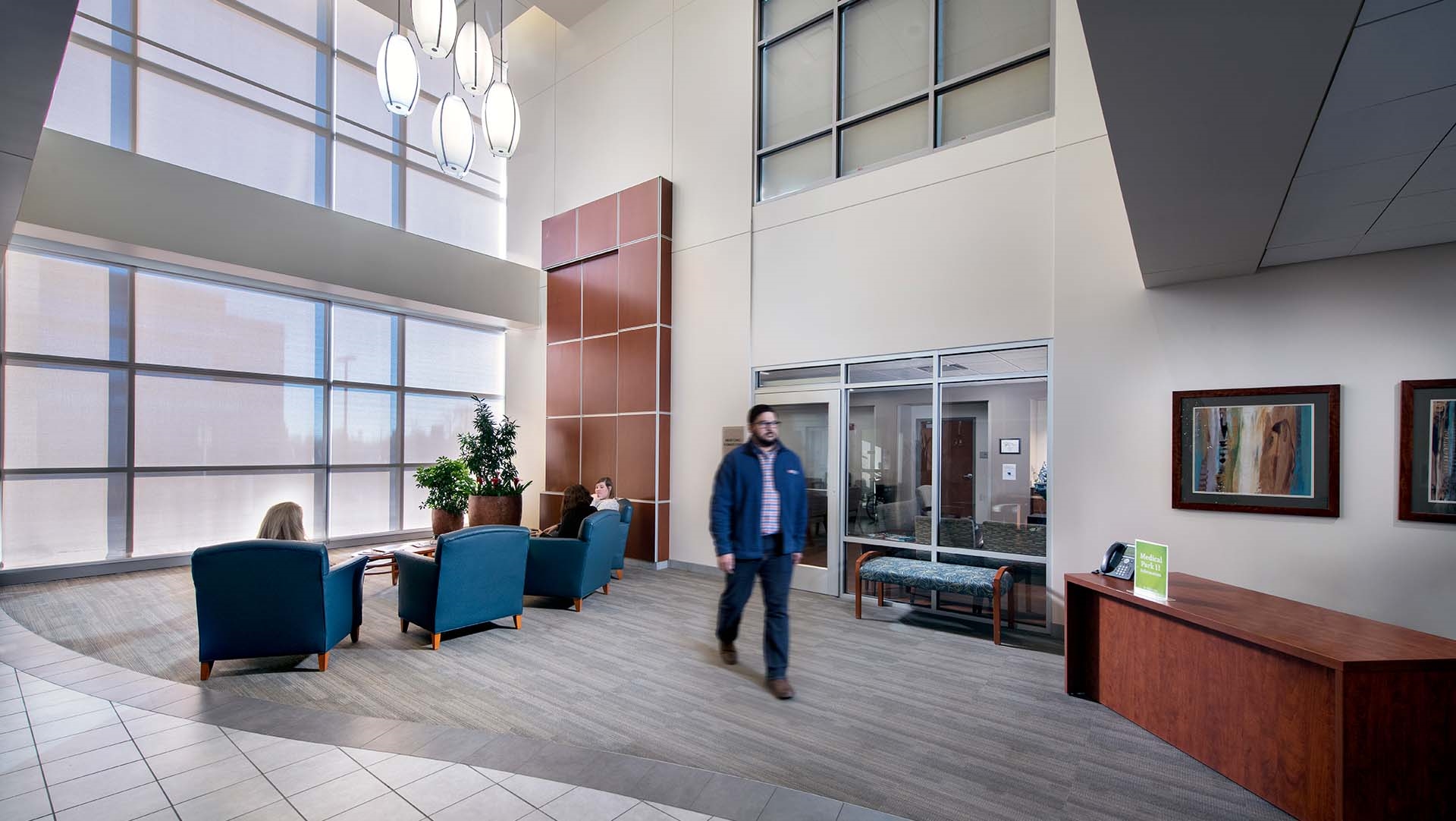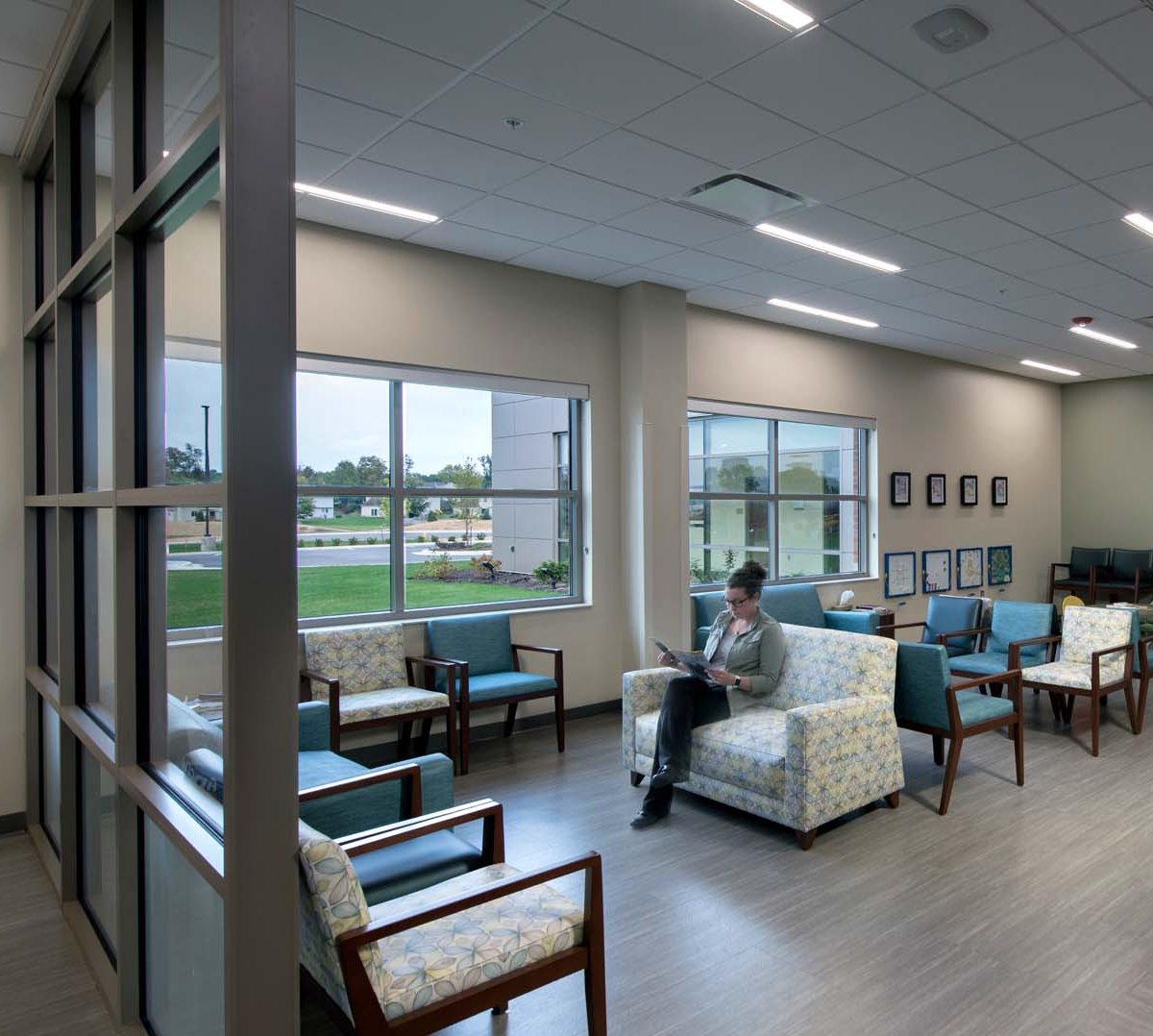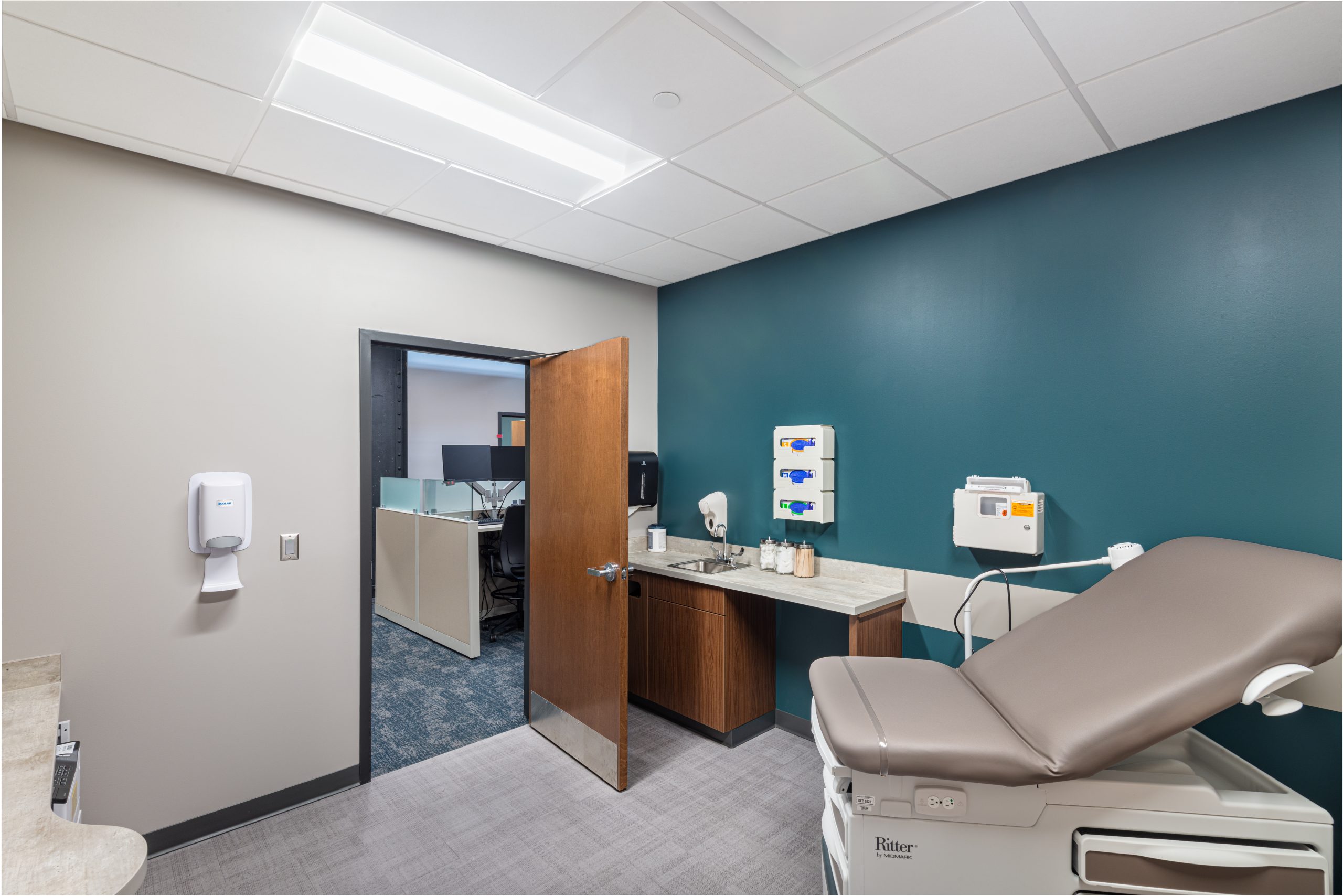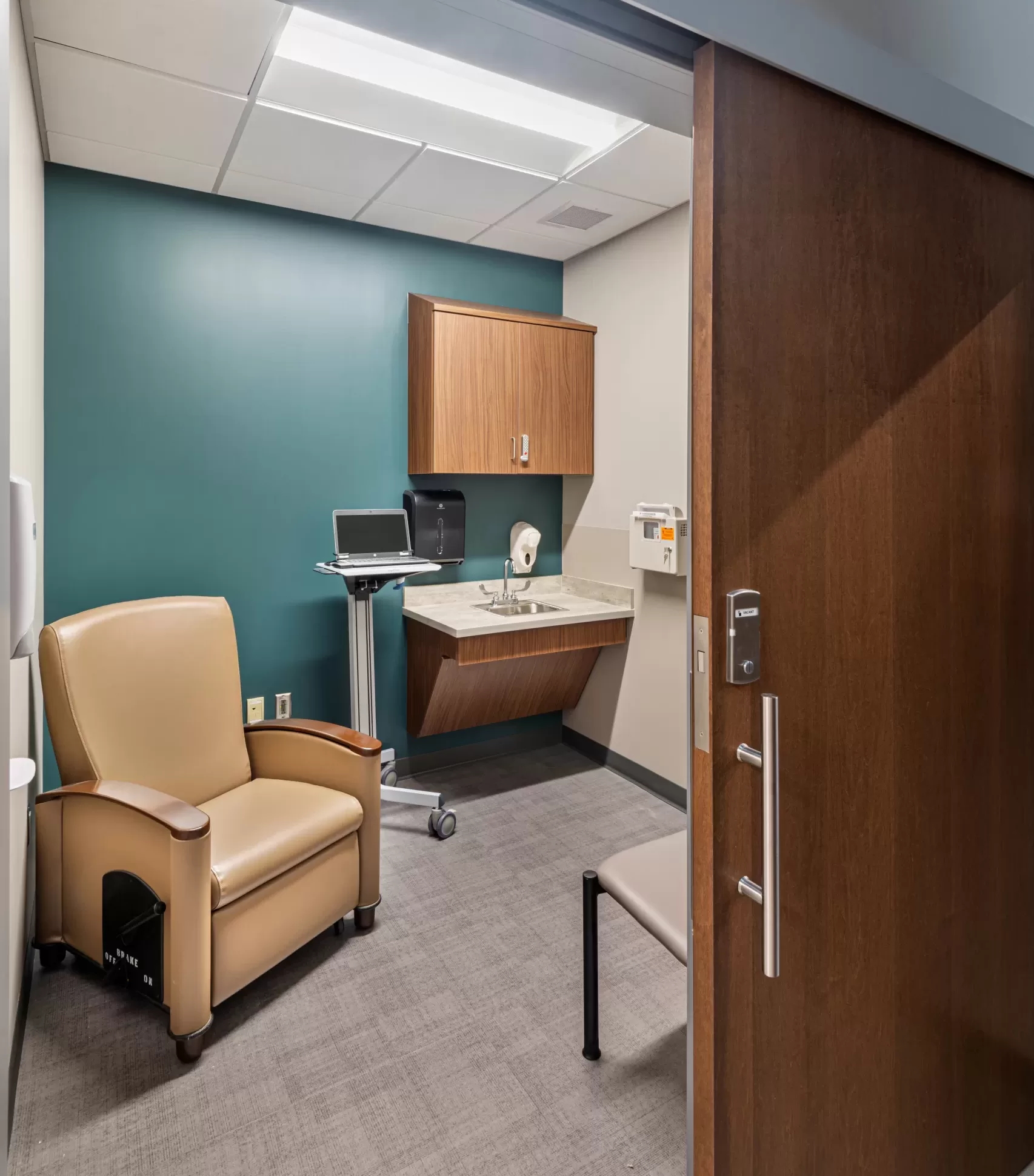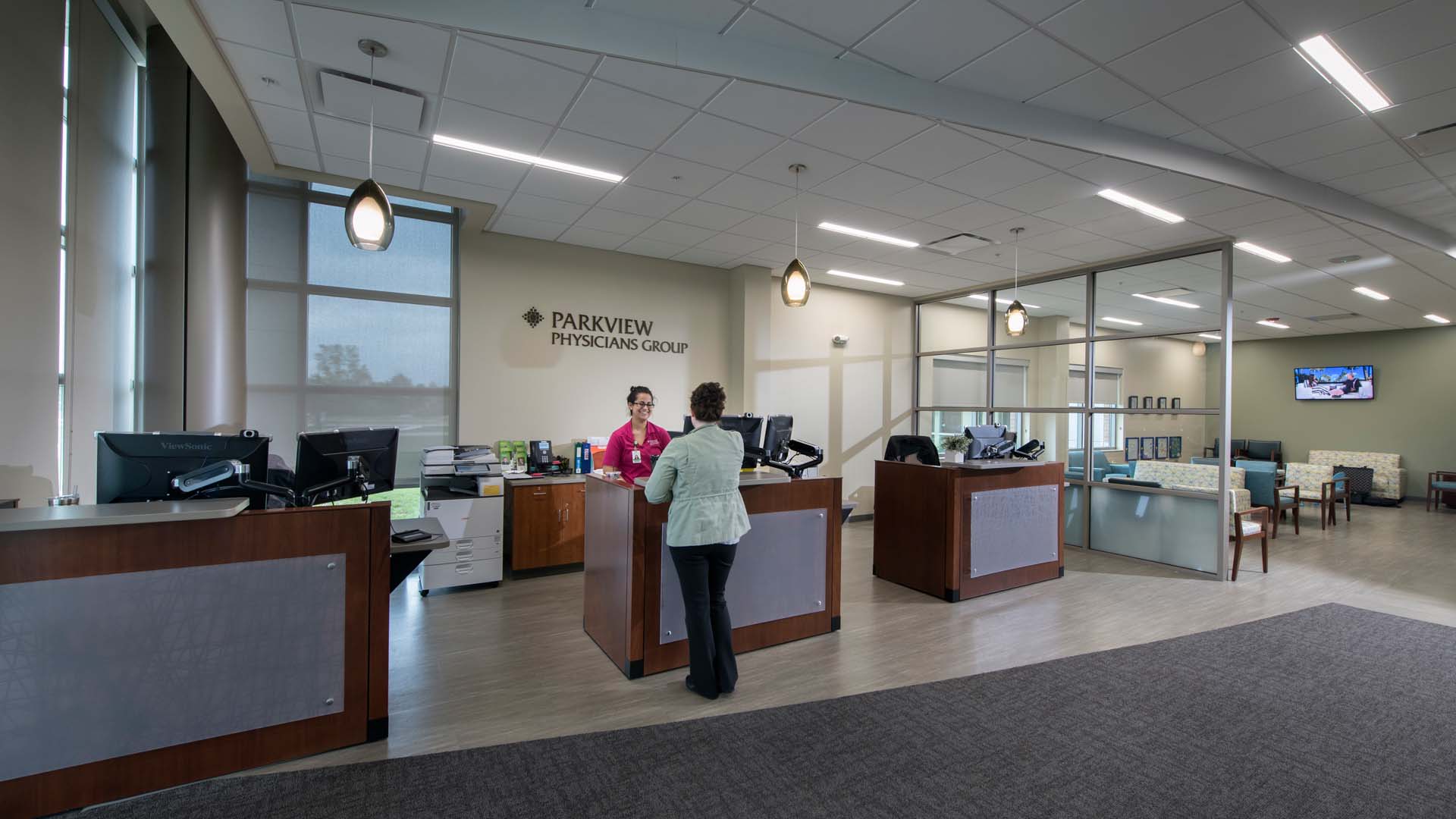Patient-First Family Medicine Clinics
By Bill Ledger, AIA, ACHA, NCARB, EDAC, LEED AP, LSSGB
April 18, 2024
There are many elements to a patient’s experience when they attend a primary care clinic, starting the moment they walk through the door.Whether or not they feel that they are being adequately cared for is crucial. By prioritizing patient-centered care, effective communication, and streamlined appointment scheduling, clinics can establish a solid foundation for improving care delivery. This approach ensures efficient and effective healthcare services while promoting trust and well-being within the community, aligning healthcare practices with the evolving needs of today’s patients. Clinics can create environments where patients feel heard, supported, and well cared for throughout their healthcare journey. As one of the main gateways to the healthcare system, family medicine clinics offer an immense opportunity to advance community health initiatives and to set the stage for a full spectrum and continuum of care. |
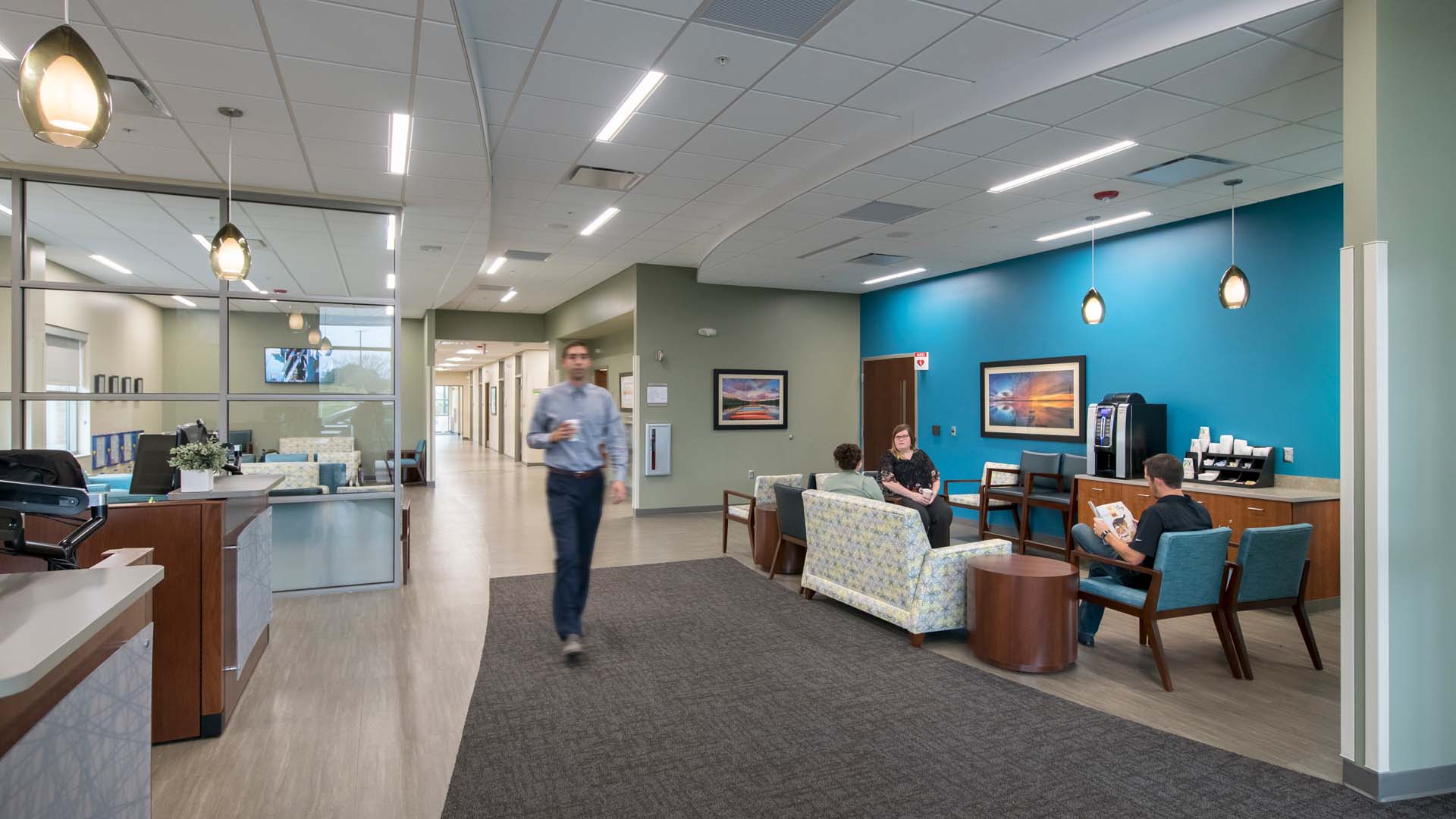 |
